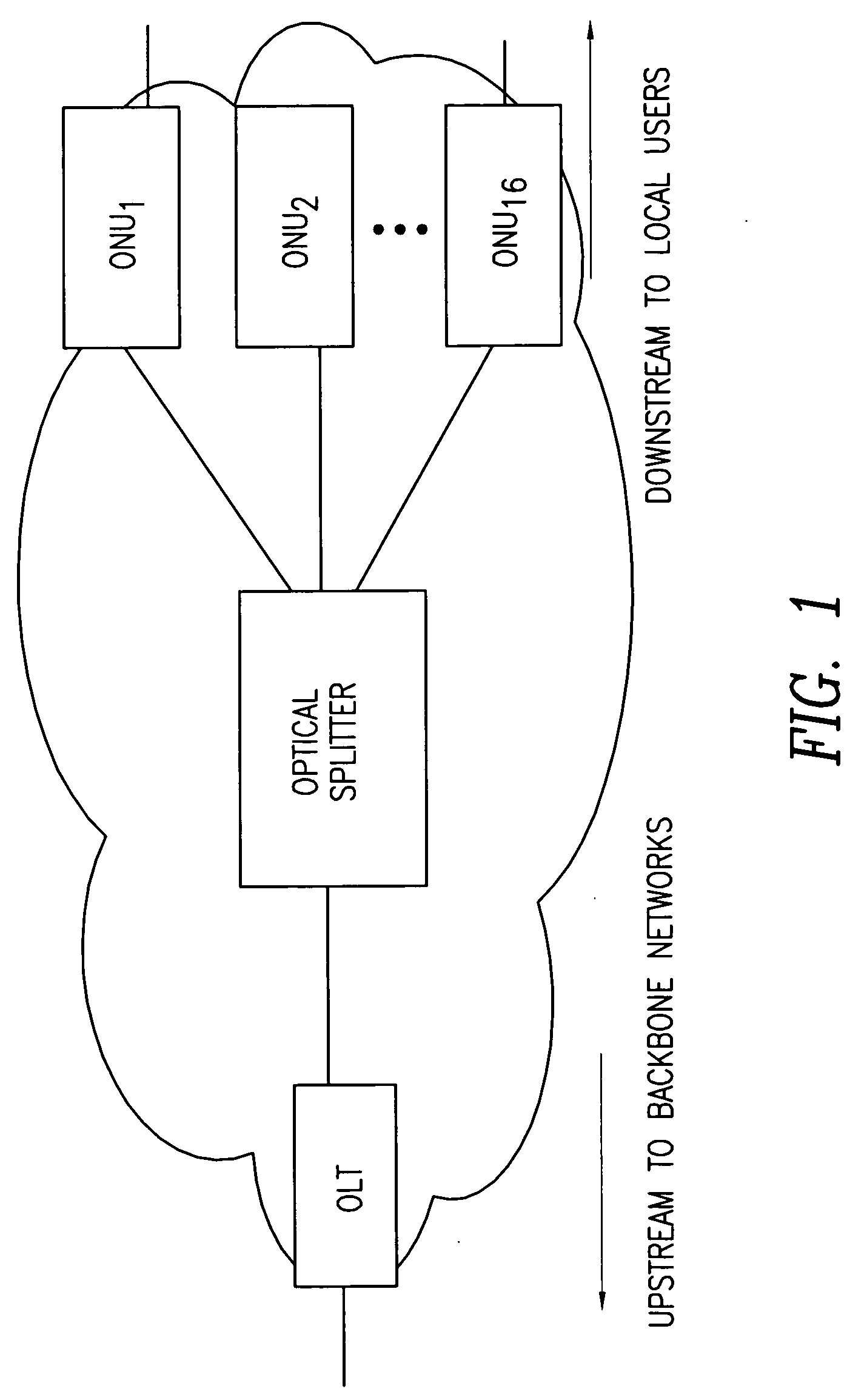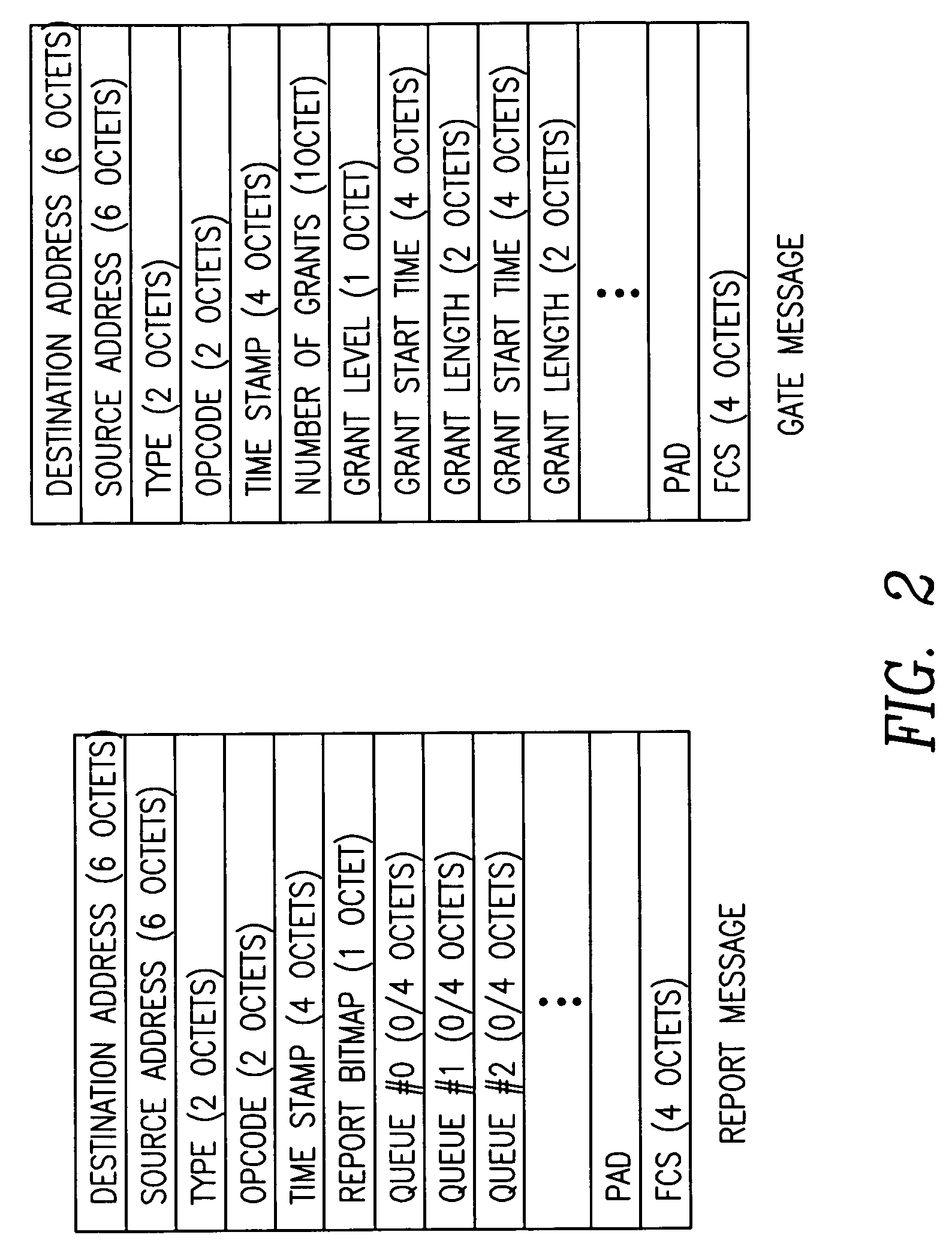Dynamic bandwidth allocation and service differentiation for broadband passive optical networks
a passive optical network and bandwidth allocation technology, applied in data switching networks, frequency-division multiplexes, instruments, etc., can solve the problems of additional data delay, existing bandwidth allocation schemes pose critical limitations, and serious bottlenecks in access networks, and achieve efficient allocation of upstream channel bandwidth and low time and space complexity.
- Summary
- Abstract
- Description
- Claims
- Application Information
AI Technical Summary
Benefits of technology
Problems solved by technology
Method used
Image
Examples
Embodiment Construction
[0022] The major challenges of PONs include the MAC protocol design and the multi-service provisioning. Because of the directional property of the passive optical splitter, it is difficult for an ONU to detect data collisions by the conventional CSMA / CD MAC protocol which was designed for Ethernet. Therefore, an efficient MAC protocol is crucial to ensure high bandwidth utilization. Since PONs do not support QoS (quality of service) directly while the access network is required to accommodate various kinds of traffic, multi-service access is a distinguished feature that PONs are expected to provide. Owing to the differences in subscriber's service level agreements (SLAs), different ONUs may have different bandwidth requirements. A pragmatic approach is to employ the timeslot-based bandwidth allocation by providing various lengths of timeslots to different ONUs.
[0023] Fixed bandwidth allocation (FBA) grants each ONU a fixed timeslot length in every service cycle. A service cycle is ...
PUM
 Login to View More
Login to View More Abstract
Description
Claims
Application Information
 Login to View More
Login to View More - R&D
- Intellectual Property
- Life Sciences
- Materials
- Tech Scout
- Unparalleled Data Quality
- Higher Quality Content
- 60% Fewer Hallucinations
Browse by: Latest US Patents, China's latest patents, Technical Efficacy Thesaurus, Application Domain, Technology Topic, Popular Technical Reports.
© 2025 PatSnap. All rights reserved.Legal|Privacy policy|Modern Slavery Act Transparency Statement|Sitemap|About US| Contact US: help@patsnap.com



